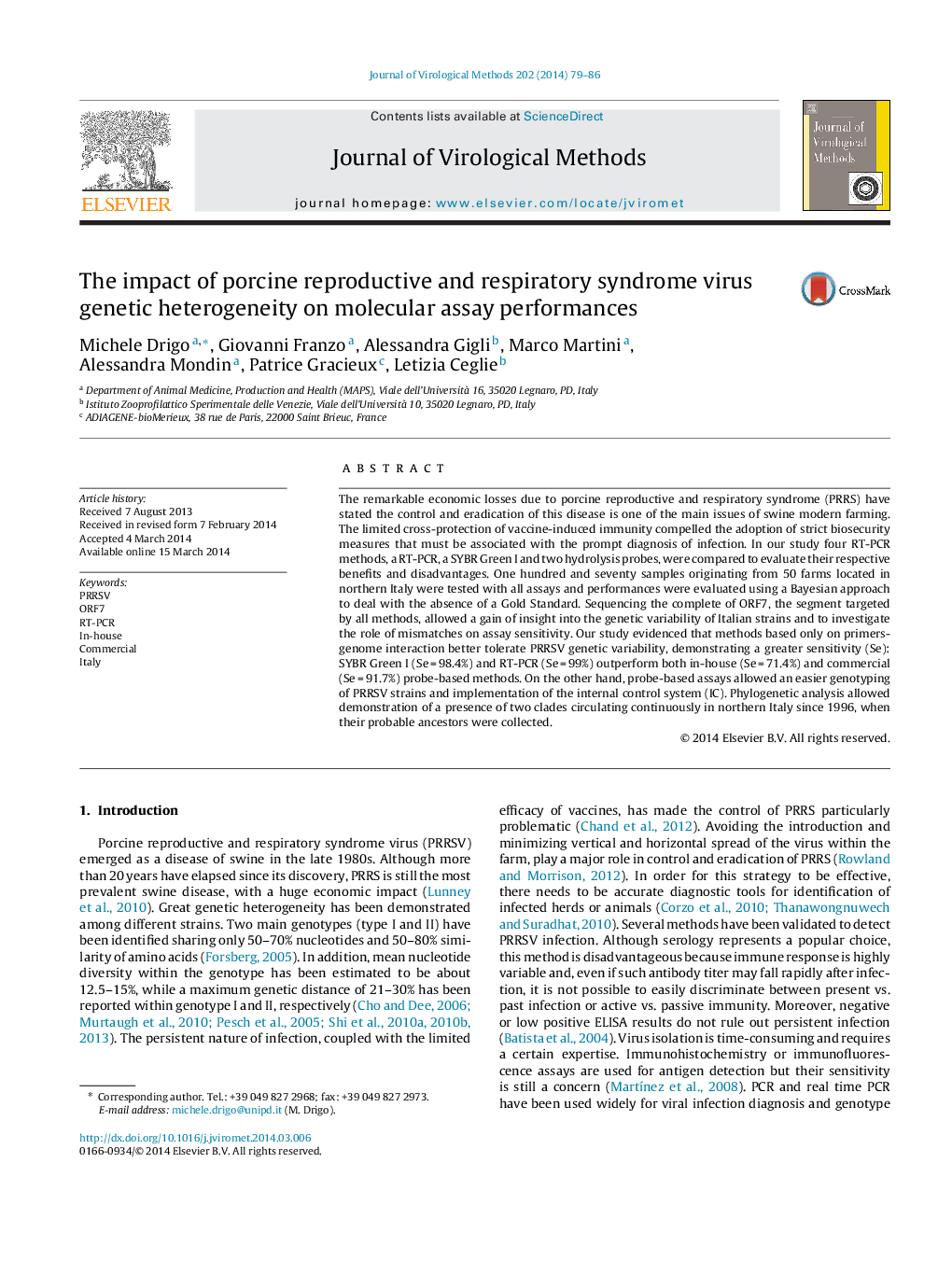| Article ID | Journal | Published Year | Pages | File Type |
|---|---|---|---|---|
| 6133742 | Journal of Virological Methods | 2014 | 8 Pages |
Abstract
The remarkable economic losses due to porcine reproductive and respiratory syndrome (PRRS) have stated the control and eradication of this disease is one of the main issues of swine modern farming. The limited cross-protection of vaccine-induced immunity compelled the adoption of strict biosecurity measures that must be associated with the prompt diagnosis of infection. In our study four RT-PCR methods, a RT-PCR, a SYBR Green I and two hydrolysis probes, were compared to evaluate their respective benefits and disadvantages. One hundred and seventy samples originating from 50 farms located in northern Italy were tested with all assays and performances were evaluated using a Bayesian approach to deal with the absence of a Gold Standard. Sequencing the complete of ORF7, the segment targeted by all methods, allowed a gain of insight into the genetic variability of Italian strains and to investigate the role of mismatches on assay sensitivity. Our study evidenced that methods based only on primers-genome interaction better tolerate PRRSV genetic variability, demonstrating a greater sensitivity (Se): SYBR Green I (Se = 98.4%) and RT-PCR (Se = 99%) outperform both in-house (Se = 71.4%) and commercial (Se = 91.7%) probe-based methods. On the other hand, probe-based assays allowed an easier genotyping of PRRSV strains and implementation of the internal control system (IC). Phylogenetic analysis allowed demonstration of a presence of two clades circulating continuously in northern Italy since 1996, when their probable ancestors were collected.
Related Topics
Life Sciences
Immunology and Microbiology
Virology
Authors
Michele Drigo, Giovanni Franzo, Alessandra Gigli, Marco Martini, Alessandra Mondin, Patrice Gracieux, Letizia Ceglie,
